What really happens when hundreds of refugees reach European soil
As 868 refugees finally reach Italy, Lizzie Dearden watches their bleak welcome from masked medics, police and immigration authorities
The Bourbon Argos has been sailing for 40 hours to carry almost 900 refugees rescued from the Mediterranean to Italy – and it arrives just in time.
One of the eight pregnant women on board the Médecins Sans Frontières (MSF) rescue ship has gone into labour and doctors must get her to hospital as quickly as possible.
“She hadn’t told anyone,” says a Hungarian midwife who discovered the expectant mother’s contractions during a routine check as the boat prepared to dock.
“The pregnant women we have on board just want to survive the boat journey and get to Italy, they don’t complain.”
The mother-to-be is one of the first passengers to be disembarked from the Bourbon Argos in the Sicilian port city of Catania, being rushed into an ambulance by waiting Red Cross medics.
She is not the only person needing urgent medical attention. One man is stretchered away with a gunshot wound in his leg, suffered six days before he was rescued as he tried to escape a prison controlled by an armed gang in Libya.
Another was so badly tortured in the country he is severely traumatised and unable to walk, being wheeled into a waiting ambulance, and one man almost drowned after falling overboard when an overloaded rubber boat started to deflate as it was rescued on Friday.
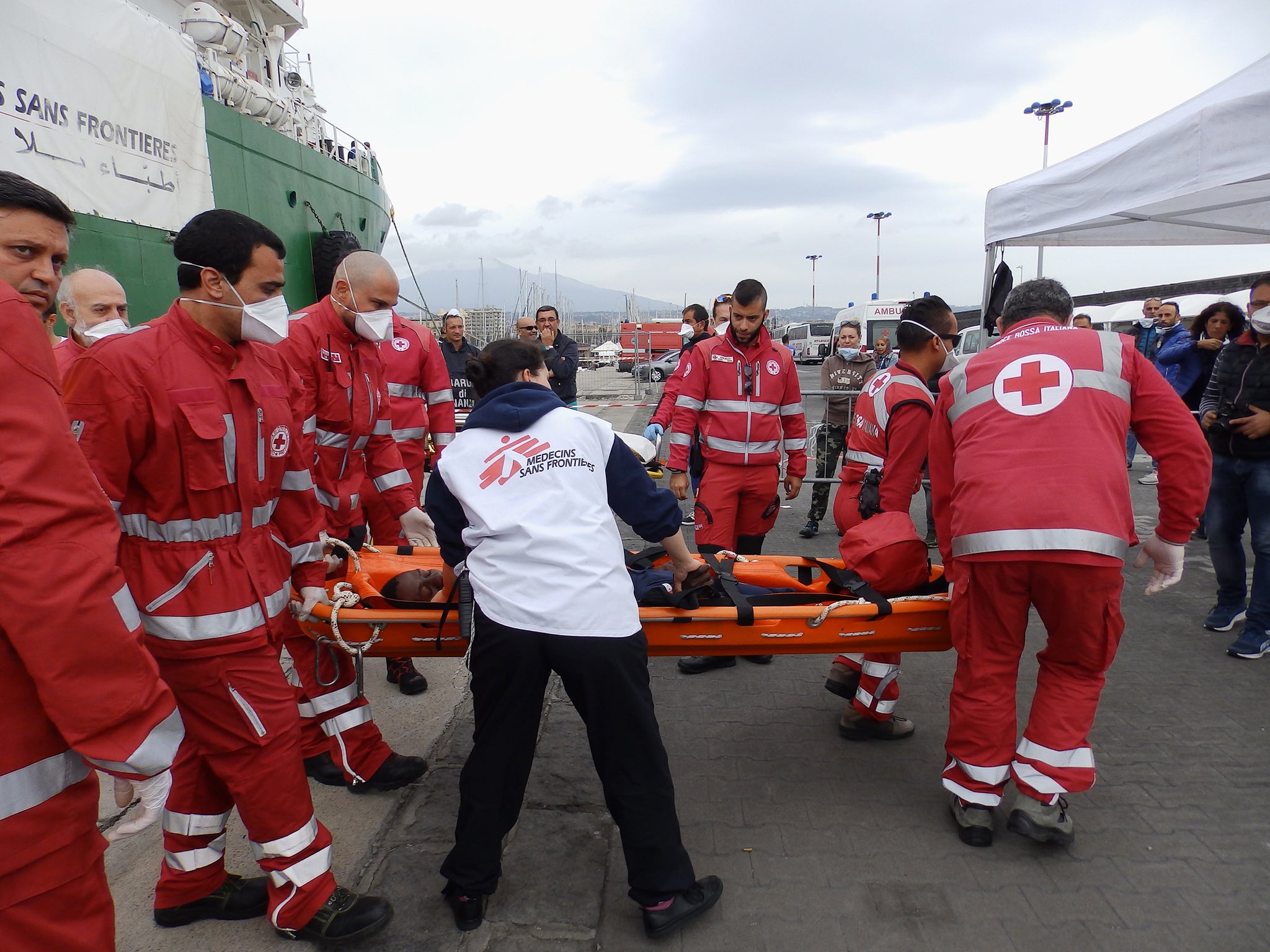
Amid the pain and distress is a sense of elation, with the wounded followed by a stream of families carrying babies, toddlers and small children in their arms, then unaccompanied minors and women travelling alone.
Some fall to their knees and throw themselves face down on the ground, kissing the tarmac before standing back with wide smiles, ecstatic to be in Europe – and on dry land.
“Thank you, thank you,” say men as they walk down the gangway to disembark, some high fiving aid workers as they go and saying swift goodbyes to new friends.
But the scene awaiting them is not the idyll they might have imagined. Medics wearing face masks and infection suits line up to examine the new arrivals, handing them regulation flip flops before checking their temperatures and looking into their mouths.
Next are the security checks. Police take children out of their parents’ arms for a photographer with a cigarette dangling from to take a photo, while an officer holds number cards next to each person’s face.
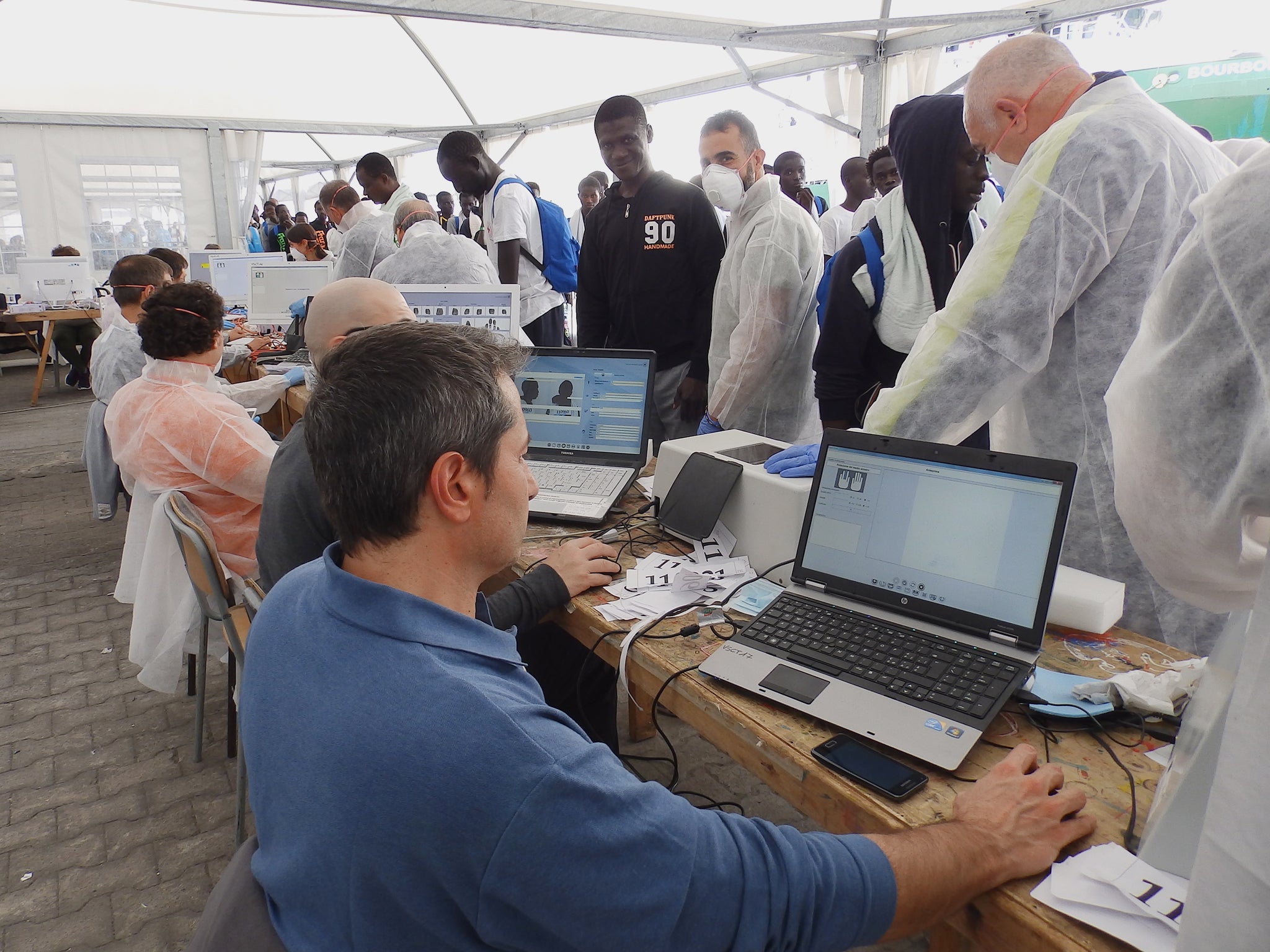
The asylum seekers then pass through medical checks in a network of tents, have their bodies and bags searched and join a long queue for fingerprinting and identification, where police may ask to look through their phones for numbers and photos to identify smuggling networks.
They are finally crowded into metal holding pens in the port’s car park, waiting for buses to take them to reception centres where they must apply for the right to stay.
The whole process is agonisingly slow, with refugees who have taken several months or even years to reach Europe sitting or standing in tightly-packed rows on the Bourbon Argos for hours waiting to disembark.
One man refuses to sit down, walking around picking up litter despite the crew’s assurance that they will clean the ship. “No, you are heroes,” he insists. “We clean.”
Groups of 10 migrants are sent across the gangway at a time, with the vessel emptying row by row into the night. The process started at 9am and continues as The Independent departs at 8pm.
Exhausted MSF staff have been working almost non-stop since getting a call from Italian commanders to a boat in distress at 3.30am on Friday morning.
The overloaded dinghy, spotted off the coast of Libya, was the first of many on a hectic day of lifesaving operations, which ended with 868 refugees tessellated across the Bourbon Argos’ decks, bow and gangways as it set sail back to Italy.
Those on board include a Syrian man whose baby was killed in bombing, a Libyan engineer whose city was taken over by Isis, a Nigerian woman kidnapped by Boko Haram, girls trafficked for prostitution and many others with stories of violence and hardship.
They are among more than 332,000 migrants to have arrived by sea in Europe so far this year, with the dominant route currently from Libya to Italy after the controversial EU-Turkey deal came into effect in March.
More than 4,200 have died attempting the treacherous crossings in 2016, now the deadliest year on record, as smugglers use ever smaller and less seaworthy boats in an attempt to evade detection.
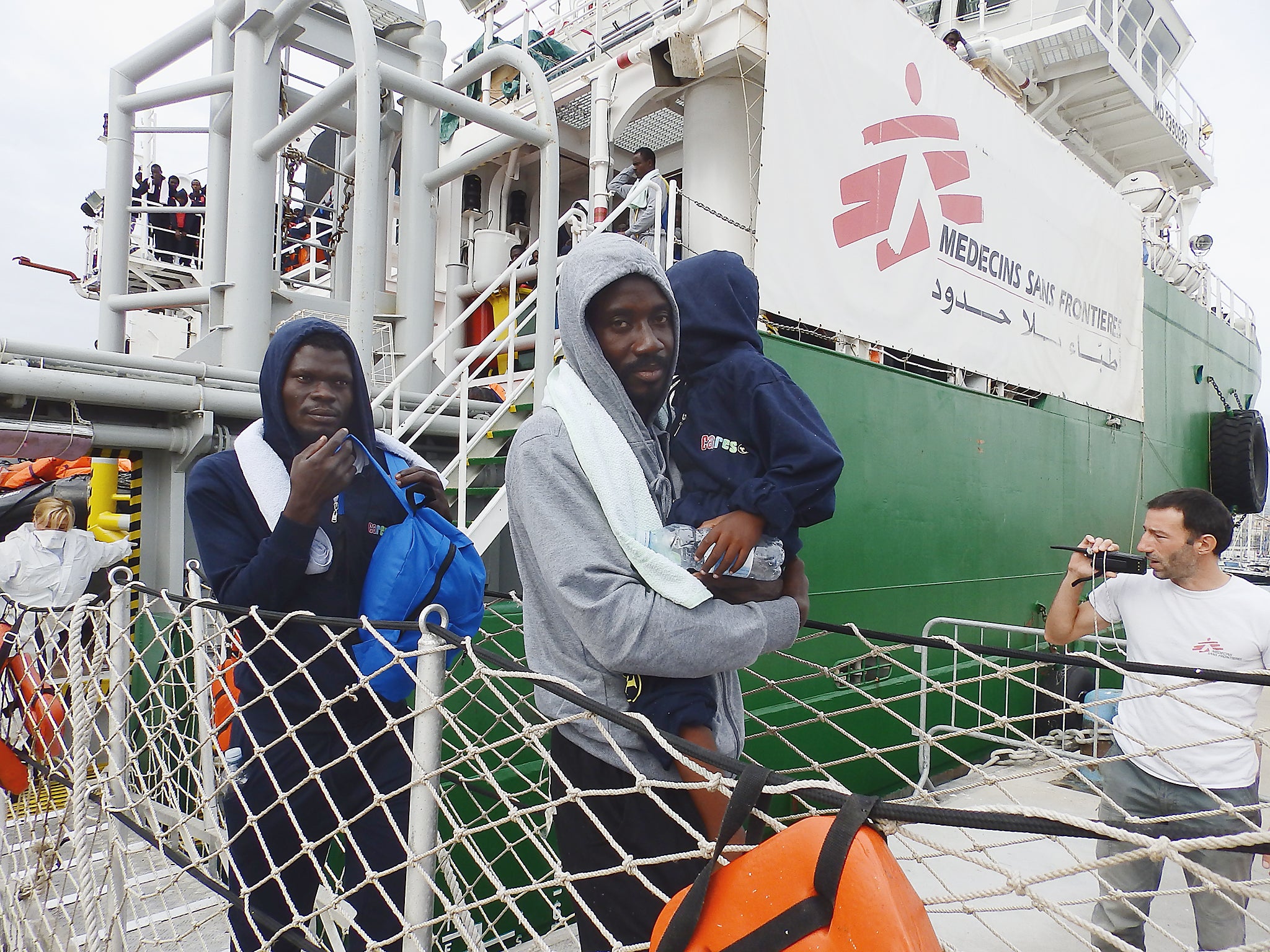
Just over a quarter of those who make it are Syrian, followed by Afghans, Iraqis, Nigerians, Eritreans and numerous other nationalities from the Middle East, Africa and Asia.
They may have reached safety in Europe, but their problems are far from over as they enter Italy’s complex reception system to claim asylum, while borders and barriers continue to strengthen across an increasingly hostile continent.
Elisa Compagnone, a psychological first aid officer, says repeated transfers and interrogations worsen the trauma already suffered by victims of torture and violence, sexually abused women and children travelling alone.
“In general the [African migrants] leave their countries for economic reasons, that’s true,” the 31-year-old Italian says.
“They go to other places in Africa to try and work there and then they hear that in Libya they can get a good job.
“And after that they face a terrible situation. They are put in ghettos, they are continually abused, especially the women. They are beaten, detained in prisons, kidnapped and sold on. This is what they tell me all the time.
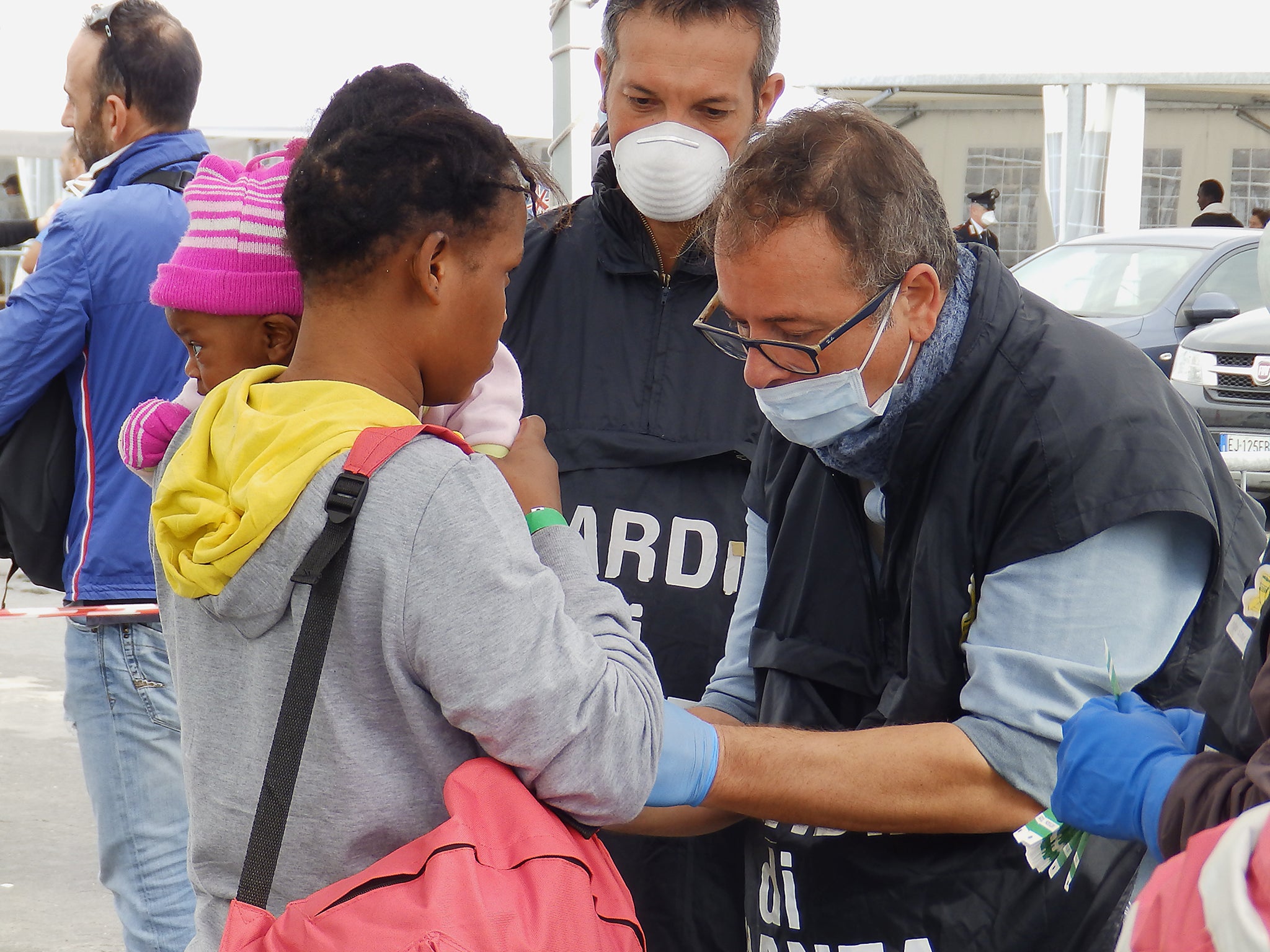
“They don’t always want to come to Europe but they want to leave Libya and there is no other way, they cannot go back to their countries. “
Tommaso Fabri, MSF’s head of mission in Italy, says the country’s reception system is “completely saturated”, housing an estimated 165,000 people as its European neighbours refuse to share the load by resettling refugees according to a quota system.
“What the government has done so far is put in emergency structures with basic services,” he explains.
“For us it’s quite astonishing because what is going on right now isn’t an emergency. It’s nothing completely new, it’s been several years with an average of 150,000, 160,000, 170,000 people arriving in Italy.
“They are scared of what will happen to them and sometimes they really do not know that in Italy they have the right to ask for asylum and have a place to stay.
“We understand it’s difficult and it’s quite a lot of people but come on. Look at Lebanon, and in Europe we are still at this level.”
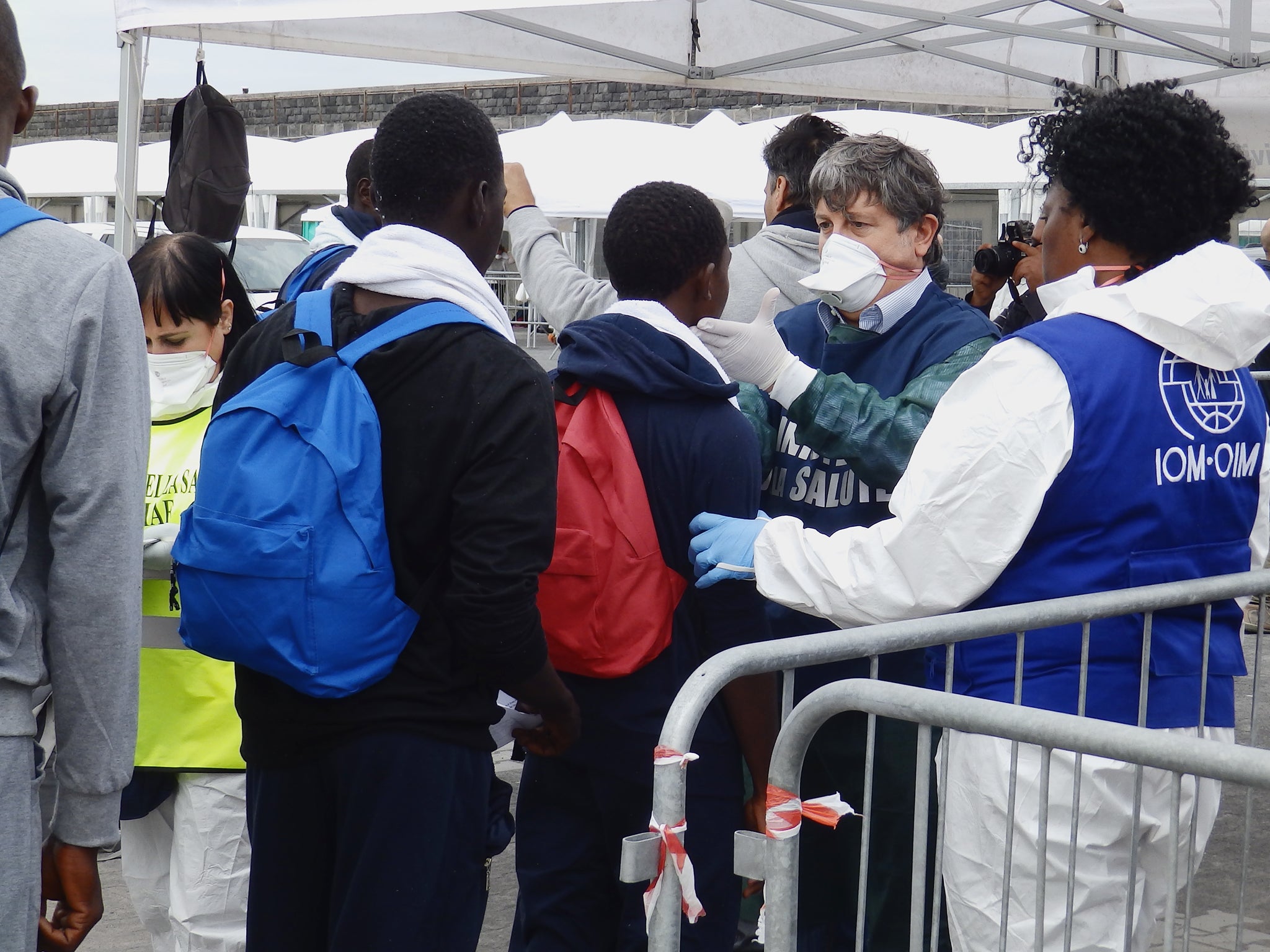
Alongside other humanitarian groups, MSF is campaigning for Italy to invest in long-term accommodation to afford refugees dignity and access to proper services and protections in line with the Geneva Convention.
But investment is sorely lacking and repeated calls for those fleeing conflict and persecution to be given safe and legal passage to Europe have gone unanswered.
As the weather worsens, the boats from Libya are not stopping, and monitors expect many more deaths at sea before the year is out as humanitarian ships pull out of the Mediterranean one by one for winter.
“European member states are not taking responsibility for the situation,” says Mr Fabri.
“They are responsible with the policies they make, bilateral agreements and the EU-Turkey deal, for instance.
“It merely externalises the problem. You put your problem in Libya, Sudan or Turkey or places like that and you let them manage. Then you put obstacles for migrants seeking protection.
“I don’t know how long we have to wait, how many deaths at sea do there need to be to make European leaders do something?”
Join our commenting forum
Join thought-provoking conversations, follow other Independent readers and see their replies
Comments